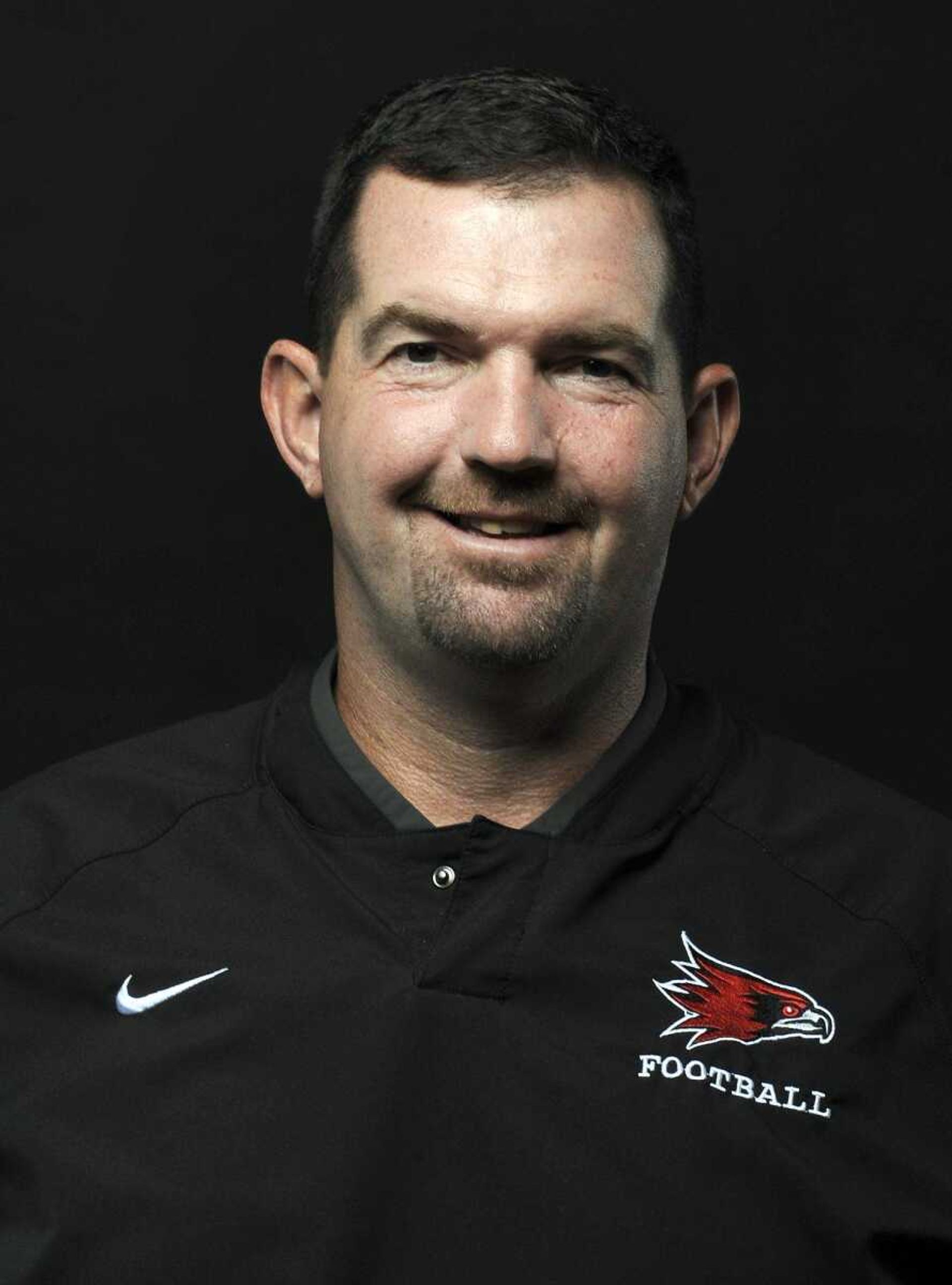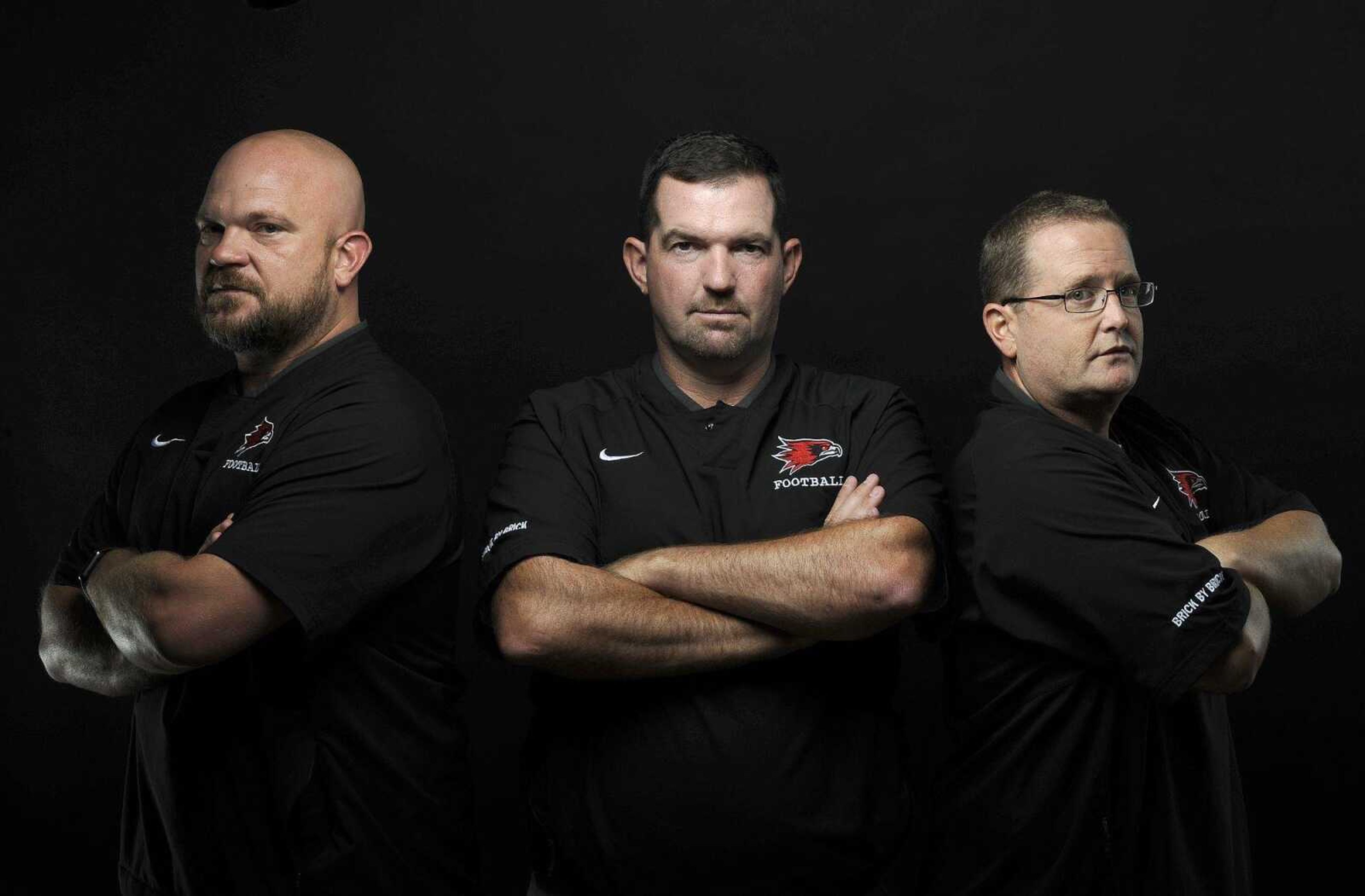Southeast Missouri State football team enters pivotal year in Matukewicz era
Observe any Southeast Missouri State football practice or team meeting and there's a good chance you'll hear coach Tom Matukewicz or one of his assistants hollering for their players to, "Kill it!" Matukewicz first uttered the phrase in Cape Girardeau when he was announced as the new Redhawks coach nearly three years ago. In the time and practices since, he's probably said it thousands of times, always trying to push his players to another level to accomplish something...
Observe any Southeast Missouri State football practice or team meeting and there's a good chance you'll hear coach Tom Matukewicz or one of his assistants hollering for their players to, "Kill it!"
Matukewicz first uttered the phrase in Cape Girardeau when he was announced as the new Redhawks coach nearly three years ago. In the time and practices since, he's probably said it thousands of times, always trying to push his players to another level to accomplish something.
Maybe this year, his third year at the helm of the program, one of the coach's favorite phrases will take on a larger meaning.
Because Year 3 of almost every rebuild Matukewicz has been a part of as an assistant has been a breakthrough for those programs, each led by Jerry Kill.
So maybe "kill it" will mean that some of that magic has rubbed off on Matukewicz, as he tries to take Southeast to the top tier of the Ohio Valley Conference.
------

The drawl is slightly different, but the words are mostly the same.
Kill, who resigned from his position as Minnesota's head football coach last October due to health reasons, is now at Kansas State, serving as associate athletics director for administration. As he reflects on his remarkable career as a reviver of struggling football programs, there's an eerie sense of familiarity.
It's probably because much of what he says has also been heard from Matukewicz, which makes sense since the Southeast coach has built a good chunk of his resume while assisting on Kill's staffs, including turnarounds at Southern Illinois and Northern Illinois.
The shared blueprint is obvious.
There's the "brick by brick" motto that Kill used when he was the head coach at Minnesota from 2010 until last fall; the program's player-led leadership council; the way practices are arranged leading up to the first game so that the players' heaviest workload is a few days further away from gameday.
Heck, Matukewicz even got advice -- "[you] better duck" -- before Southeast's 2015 season opener at Missouri, since Kill's Minnesota team had been defeated by the Tigers in a bowl game in 2014.
Matukewicz and SIU first-year coach Nick Hill, who was Kill's quarterback at SIU in 2006 and 2007, have both talked about following their mentor's lead. Now Matukewicz, in Year 3 of his first head coaching gig, is also trying to emulate Kill's success.
The Salukis had only one winning season in the 15 years prior to Kill's 2001 takeover. The team went 1-10 and 4-8 in Kill's first two seasons there. The following year the Salukis went 10-2 and won the Missouri Valley Football Conference -- then known as the Gateway Football Conference. He went on to post a record of 50-14 from 2003-2007 -- with Matukewicz on his staff since Day 1 -- becoming the first coach to post four straight winning seasons at the school. During that run, SIU went to the Football Championship Subdivision playoffs every season and twice beat Football Bowl Division opponents.
The success was similar at Northern Illinois. Kill and his staff inherited a program that had gone 2-10 in 2007; by Year 3 -- Kill's final season with the Huskies in 2010 -- they went 11-3 and undefeated in the MAC to secure a spot in the MAC championship game.
Following the team's 26-21 conference title loss to Miami (Ohio), Kill departed for Minnesota. It was then that Matukewicz embarked down his own path, acting as interim head coach for NIU's 40-17 Humanitarian Bowl victory over Fresno State and remaining at NIU as an assistant for one more season before heading to Toledo for a defensive coordinator position.
------
In his first two seasons at Southeast, Matukewicz's team has gone 5-7 and 4-7, respectively, and posted three wins in the Ohio Valley Conference each campaign.
From Day 1, Matukewicz said that in his third year at Southeast, he expects to be competing for an Ohio Valley Conference title, since that's what had happened everywhere else he'd gone.
"It was kind of weird. I don't why it always seemed to turn Year 3. I wish I knew," Kill said in a phone interview. "But I think probably it's that we went in as a group -- I was blessed with good assistant coaches -- and I think we went in and built a foundation and said, 'This is who we're going to be and what we're going to do, and this is our vision.' Then we recruited to that vision. It seems like everywhere we've been we've had a couple good recruiting classes with some high-character kids that wanted to play, and for whatever reason, it happened in the third year."
According to Kill, some of the first steps included a focus on academics -- "because if you don't have players that are eligible, you're not going to win any games."
Matukewicz's first year at Southeast resulted in the highest team GPA in 110 years.
That's just one small piece of changing the culture, which was one of the next items Kill recalled.
"You had to make it important to the people where you're at and to the players," Kill said. "You had to take a good look at the weight room and what you wanted to accomplish there and what your philosophy was, and then you had to sell everybody in the building on your brand, so to speak. At Minnesota it was building the program brick by brick. At Southern Illinois it was that we were going to have kids that were hard-hat, lunch-box kids -- kids that were going to come to work every day."
Matukewicz chose the "Brick by Brick" approach but also emphasized he product he and his staff put on the field was going to be one that Southeast fans would be proud of.
Finding trustworthy players that returned from a previous coaching staff was critical in the process, too -- ones who could lead the new recruits that fit the program's model.
"The hardest part about changing that is getting the type of people that are going to lead the other people down the right road, and we were fortunate enough to bring in good kids and got them around the kids that we had there that were good. And you slowly turn that locker room culture," Kill said. "It's been tougher at some places than others. It was really tough at Minnesota, but usually when you've recruited, three-fourths of them went the way they were supposed to. And the other one-fourth didn't, and eventually they couldn't keep up with the standards of the football team."
Matukewicz immediately implemented his own leadership council. He tweaked his leadership model this offseason to "10 Strong," which allows for a "leader" to preside primarily over his own fellow position players.
Southeast defensive coordinator Bryce Saia was also a part of the turnaround at Southern Illinois. He sees similarities between that program's stage of growth and the current phase at Southeast.
"When we first took over a program, we were playing a lot of young kids, and the third and the fourth year, those young kids started to grow up," Saia said.
The Redhawks have that, with 25 seniors on their roster and several expected to be on the depth chart at the start of the season.
Many of Saia's guys' -- "the heart and soul of the defense" -- are in that faction and have matured into leaders he's proud of.
"It just feels like everything's a little easier," Matukewicz said of the third-year difference. "Most of the kids are our kids. The schedule you've been able to tweak and refine, and you really feel comfortable with everything. Hopefully you've got that roster where every single position has competition on it."
Each of those third-year teams had an excellent quarterback and strong defense, according to Matukewicz -- a quarterback that was a leader, decisive and able to generate plays when they broke down, the same qualities he's sought from his starter since he arrived.
He's still trying to figure out if he's got that. The defense, if it shows up consistently, is championship-caliber.
"We had tough kids. We recruited tough kids," Kill said. "But we had mental and physical toughness and a team that cared more about each other than they cared about themselves -- unselfish. We talked about being physically and mentally tough all the time, and our kids were tough."
Remarkable seasons don't just come out of thin air. Kill, Matukewicz and Saia can all attest to sensing a turning point.
"If you've been part of good defenses before -- like I've been very fortunate to have -- you just feel it," Saia said. "There's kind of that kind of feel here right now."
Those moments come in the weight room or on the practice field as the players are pushed to their limits.
"When the workouts get tough, 'Are they sticking together -- forming that bond, that brother?'" Saia said.
Matukewicz won't necessarily say he sees things turning during practices, but there are other times it becomes evident.
"Generally there's always a turning point whether it's a win or how you handle a failure or some type of bad situation and you know -- 'You know what? This team might have what it takes to compete,'" Matukewicz said.
Kill knew it could happen at SIU when his team came back to knock off nationally-ranked Western Illinois and saw "a bunch of kids gain a lot of confidence." The Salukis followed that up with a win over nationally-ranked Northern Iowa before losing their final five games of the season.
He couldn't quite put his finger on the moment it happened at NIU, but at Minnesota, it was when the Gophers beat Northwestern, then Penn State and Nebraska.
"... Usually you end those seasons with a ring, so that's the goal," Saia said. "Division I [FBS] it's bowl rings. Division I-AA [FCS] hopefully it's conference titles and playoff rings."
Connect with the Southeast Missourian Newsroom:
For corrections to this story or other insights for the editor, click here. To submit a letter to the editor, click here. To learn about the Southeast Missourian’s AI Policy, click here.






